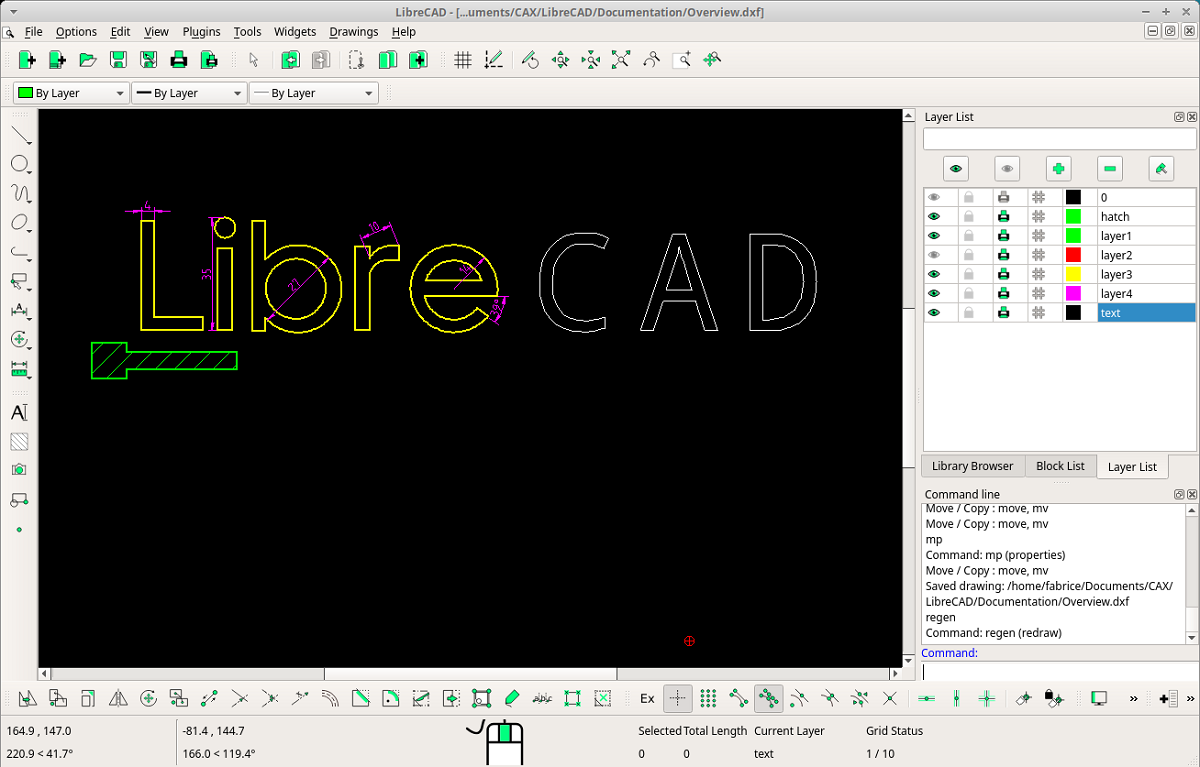
LibreCAD is an open source computer aided design software application for 2D design.
After six years of development the launch of the new version of the popular CAD system «LibreCAD 2.2», which comes with many internal changes and one of the most outstanding novelties is the change from QT 4 to QT 5. In the development of this new version, around 4800 confirmations have been made since the last stable version 2.1.3 .
For those unaware of FreeCAD they should know that this is a free CAD free code application (computer-aided design) for 2D design. LibreCAD was developed from a fork of QCad Community Edition. LibreCAD development is based on the Qt5 libraries, and can be run on various platforms in an identical way.
There is a large LibreCAD user base around the world and the program is available in more than 20 languages and for all principales OS, including Microsoft Windows, Mac OS X and Linux.
Main novelties of LibreCAD 2.2
In this new version of LibreCAD 2.2, as we mentioned, support for the Qt4 library was discontinued., the interface was completely translated to Qt 5 (Qt 5.2.1+).
Another change that stands out in the new version is that the undo/redo engine has been completely redesigned, as well as that the interface has been improved for the preview before printing, added settings for the document title and line width control.
In addition to this, we can also find in LibreCAD 2.2 that added the ability to select multiple areas at the same time and perform batch operations with lists of blocks and layers.
In the libdxfrw library developed by the project, support for the DWG format was improved, performance when panning and zooming large files was optimized.
The improved command line interface capabilities related to processing multi-line commands, as well as writing and opening files with commands.
On the other hand, it is mentioned that accumulated errors were corrected, some of which caused a crash, in addition to adding support for new versions of the compiler.
Finally, we can also highlight that it is mentioned that in development branch parallel of LibreCAD 3, work is underway to switch to a modular architecture, in which the interface is separated from the base CAD engine, allowing to create interfaces based on different toolkits, without being tied to Qt, plus an API was added to develop plugins and widgets in the Lua language.
If you are interested in knowing more about it, you can consult the details In the following link.
How to install LibreCAD on Ubuntu and derivatives?
Due to the great popularity that the application has gained thanks to its great development over many years, this application is found within most of the current Linux distributions.
So its installation in Ubuntu, as well as its derivatives is relatively simple, for those who choose this method, they can do it in two different ways.
The first one is by opening a terminal in the system, this can be done by pressing the Ctrl + Alt + T keys and in it we are going to enter the following command:
sudo apt-get install librecad
The other way is to install from the software center of our system, so we just have to open it and look for the "LibreCAD" application. Once this is done, it will be displayed and just click on the button that says "Install".
LibreCAD installation from PPA
Another method to install this application from repositories, In this case, it is by making use of third-party repositories, where we can obtain the updates of the application in a faster way, than compared to the previous method.
For this we are going to open a terminal and we are going to execute the following commands.
sudo add-apt-repository ppa:librecad-dev/librecad-daily
We update our list of repositories with:
sudo apt-get update
And finally we install the application with:
sudo apt-get install librecad